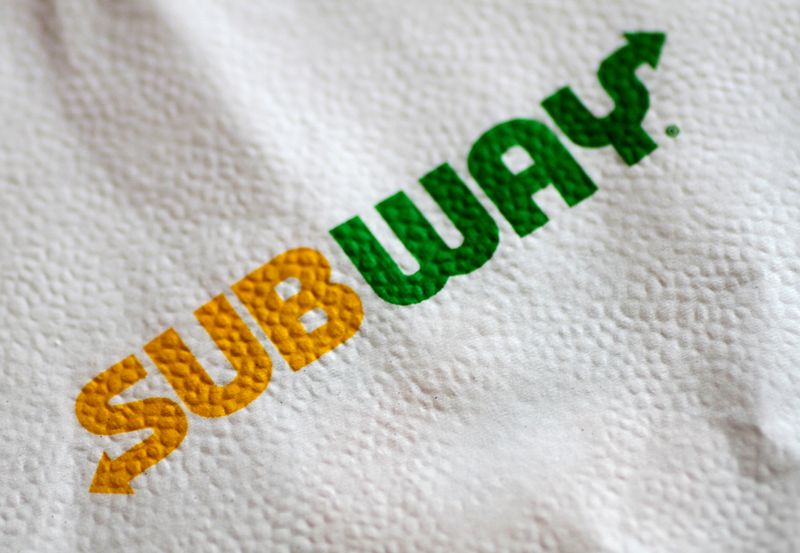(Reuters) - Roark Capital snapped up Subway in a $9.55 billion deal, sources said on Thursday, after it outbid several private-equity groups.
The company, which enjoyed a period of explosive growth through the first decade of the century, failed to overcome challenges from over-expansion, competition and changing consumer preferences in recent years.
Here are some key facts and events in its history:
Pete's Super Submarines
In August 1965, 17-year-old Fred DeLuca and family friend Peter Buck opened a submarine sandwich shop in Bridgeport, Connecticut. Named Pete's Super Submarines, the outlet sold more than 300 sandwiches on the first day.
The Subway name was used for the first time in 1968.
U.S. expansion
By 1974, DeLuca and Buck ran 16 sandwich shops across Connecticut. The pair then started franchising Subway restaurants, with the first outlet outside of Connecticut being opened in Massachusetts a year later.
Subway hit 300 locations across several states by 1982.
International expansion
The first overseas restaurant was opened in Bahrain in 1984. By 1990, Subway had a total of 5,000 restaurants globally.
$5 Footlong
Subway launched its popular $5 Footlong promotion across the United States in 2008, making a huge splash among Americans, who were then looking for cheaper meals amid the global financial crisis.
Its move also spurred a wave of copycat deals: KFC and Arby's promoted $5 meal deals, while rival Quiznos rolled out a $4 sandwich special. McDonald's (NYSE:MCD) and Burger King also offered sandwich deals in the $3-$4 range.
DeLuca dies; Fogle scandal
In July 2015, Subway suspended Jared Fogle, who appeared in hundreds of commercials and represented the company at restaurants and other events. He pleaded guilty to child pornography and sex charges in November 2015.
In September 2015, co-founder DeLuca died after a long battle with leukemia.
Competition was also heating up for Subway, as it struggled to keep up with names like Popeyes and Chick-fil-A. The company closed 359 U.S. restaurants in 2016, with its U.S. sales slipping 1.7% to $11.3 billion that year.
Chidsey takes the helm
Subway appointed John Chidsey, former head of Burger King, as its new CEO in 2019. Under Chidsey, the company revamped its U.S. menu to address a years-long lack of innovation, introducing new sandwiches, a wide range of new ingredients and two types of bread.
It also brought back items including rotisserie chicken and roast beef after pulling it from menus during the COVID-19 pandemic.
Subway invested heavily in marketing, in what Chidsey said was the second-largest ad budget among restaurants behind McDonald's.
Sales growth
Following an overhaul of its menu, Subway said its 2021 U.S. sales surpassed expectations by nearly $1.4 billion.
While the privately held company did not disclose its total annual revenue, it noted 75% of the system - or more than 16,000 locations - saw a 7.5% rise in same-store sales in 2021, compared to 2019 levels.
For 2022, Subway posted a 9.2% year-over-year increase in same-store sales, thanks to its "Subway Series" menu - a lineup of 12 new signature sandwiches. For the first half of 2023, same-store sales in North America grew 9.3%.
Explores sale
Subway said in February it was exploring a possible sale of the company, adding J.P. Morgan was its adviser and that it would conduct the sale exploration process.

In March, Goldman Sachs' asset management arm, PE firms Bain Capital, TPG, TDR Capital, Advent International and Roark Capital emerged among the list of suitors for the sandwich chain.
Reuters reported earlier this week, citing sources that Roark Capital was in the lead to acquire the chain for well over $9 billion after attaching conditions to some of the windfall the two families that own it would get.